This post may contain affiliate links. Please read my disclosure policy.
Learn how to cut carrots into flower shapes for beautiful Japanese food presentation. From simple veggie cutter techniques to hand-carved plum blossoms (Nejiri Ume), I’ll show you step-by-step methods to transform carrots into elegant edible flowers.
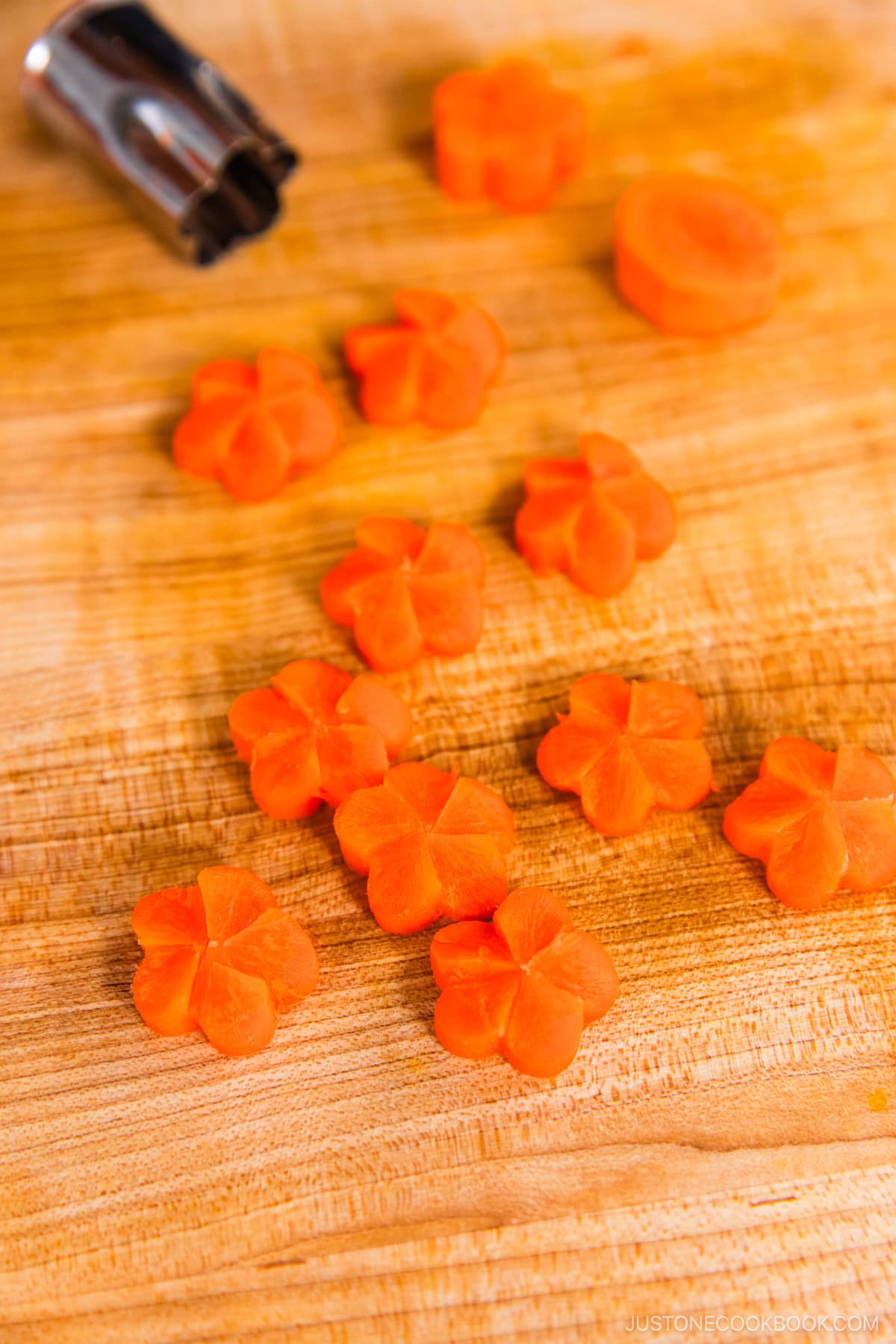
In Japanese cuisine, we add carrot coins shaped like flowers to simmered and hot pot dishes for both celebratory occasions and everyday home cooking. Today, I’ll show you both beginner and advanced methods for —especially, iconic Japanese plum blossoms known as (ねじり梅). It’s actually easy to do with a little practice, and you’ll love how they enhance your food presentation!
See how I use nejiri ume in my Sukiyaki, Shabu Shabu, and Chikuzenni (Nishime) recipes!

Nejiri ume (ねじり梅) translates to “twisted plum.” We use this decorative cut to carve plum flowers from carrots to cook in hot pots and simmered dishes. Plum trees in Japan are among the first to blossom in the new year, appearing late January to mid-March, depending on the region. The flowers bloom in wintertime when the weather is very cold and symbolize resilience, perseverance, and the promise of spring.
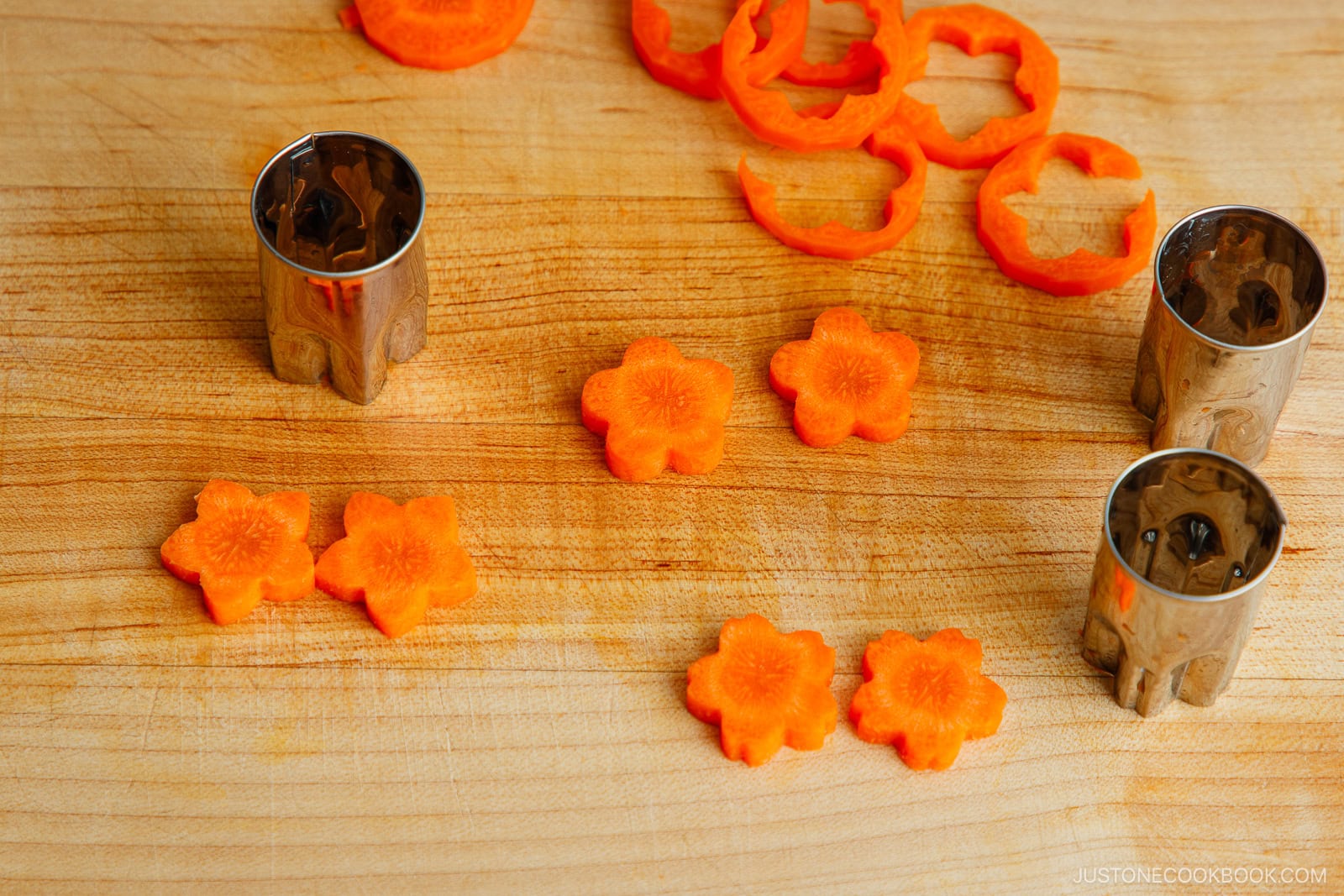
Find the tutorial with measurements below.
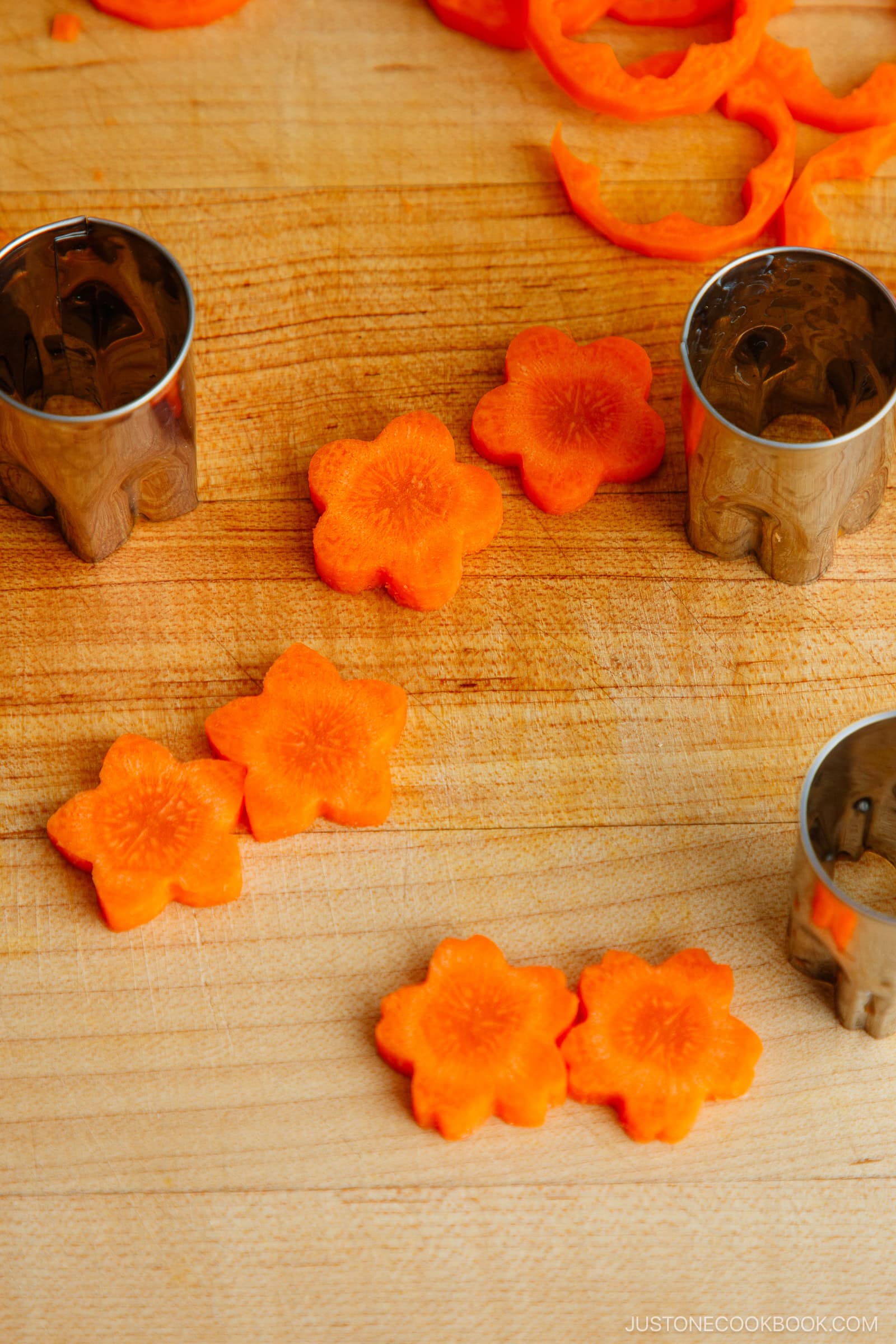
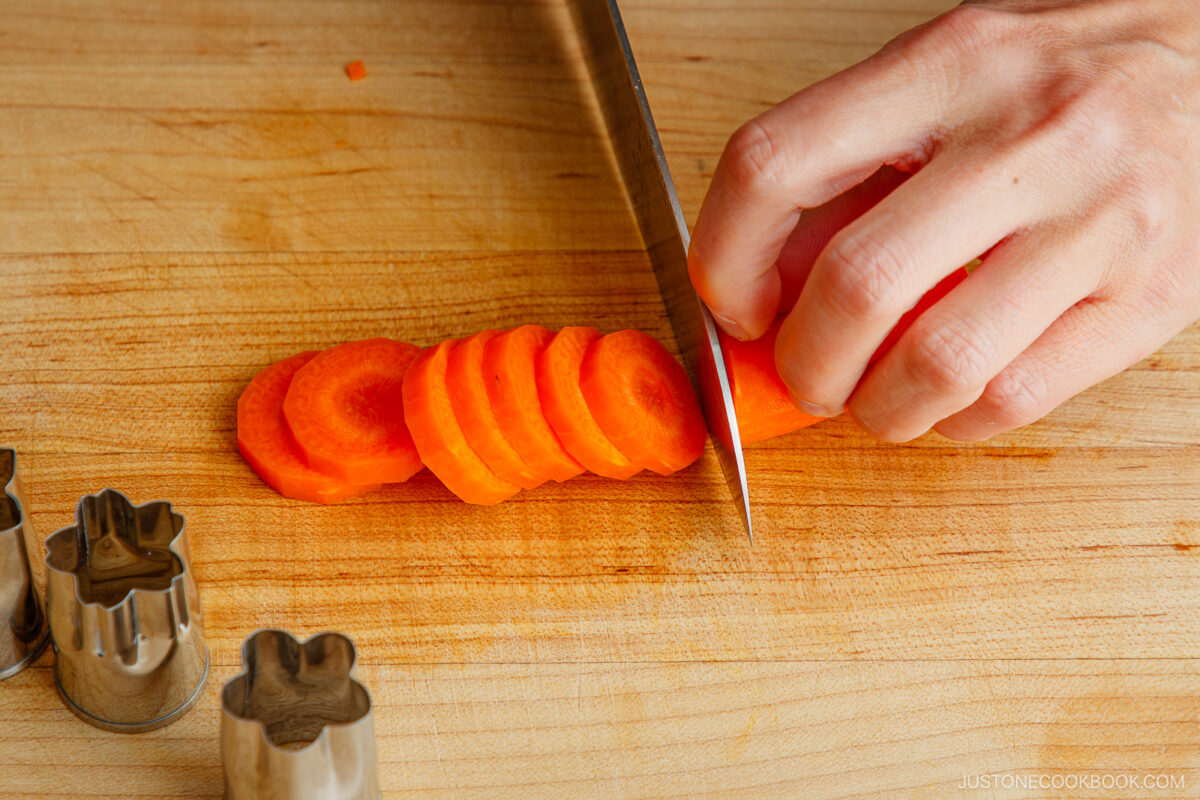
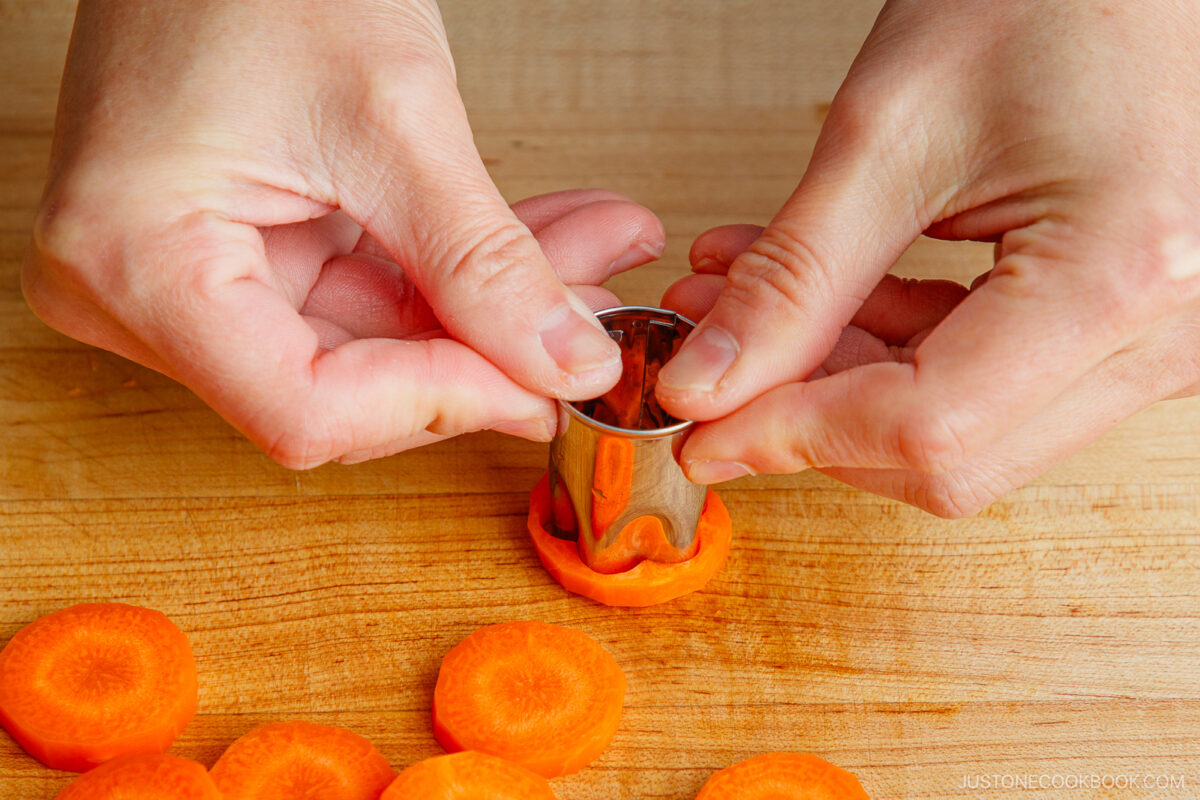
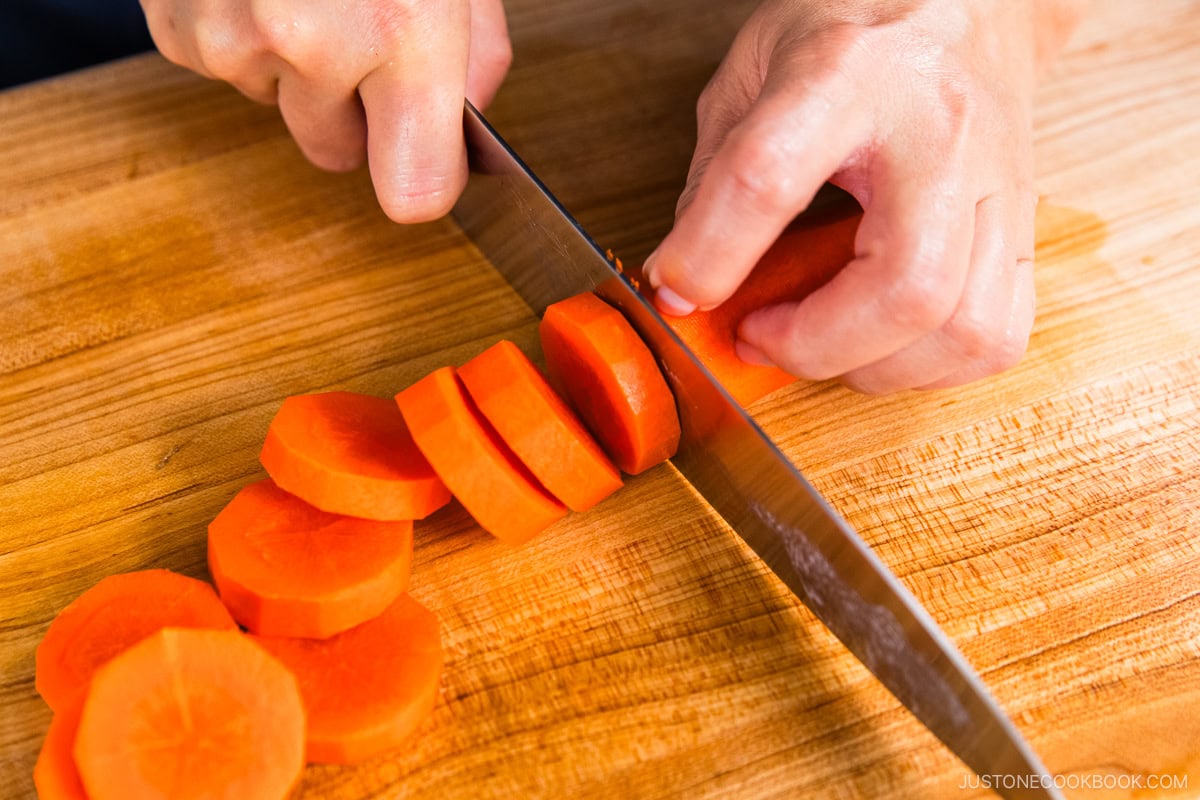
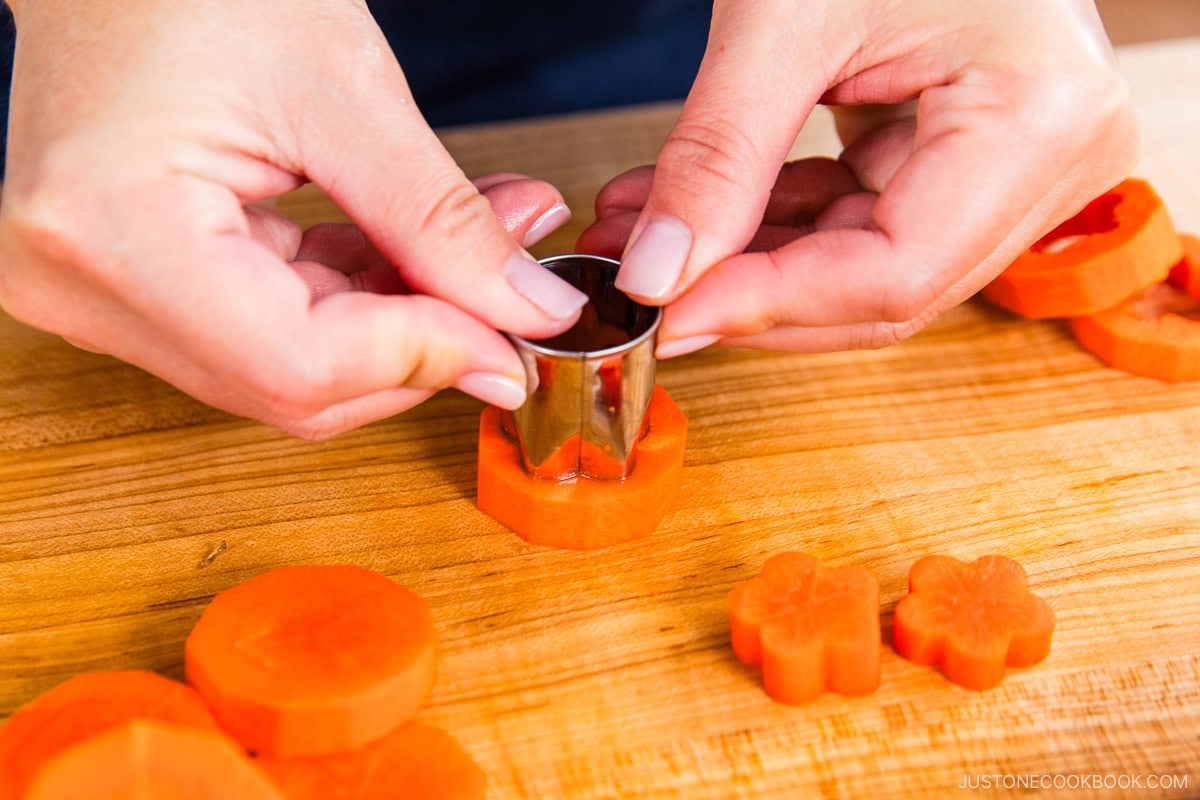
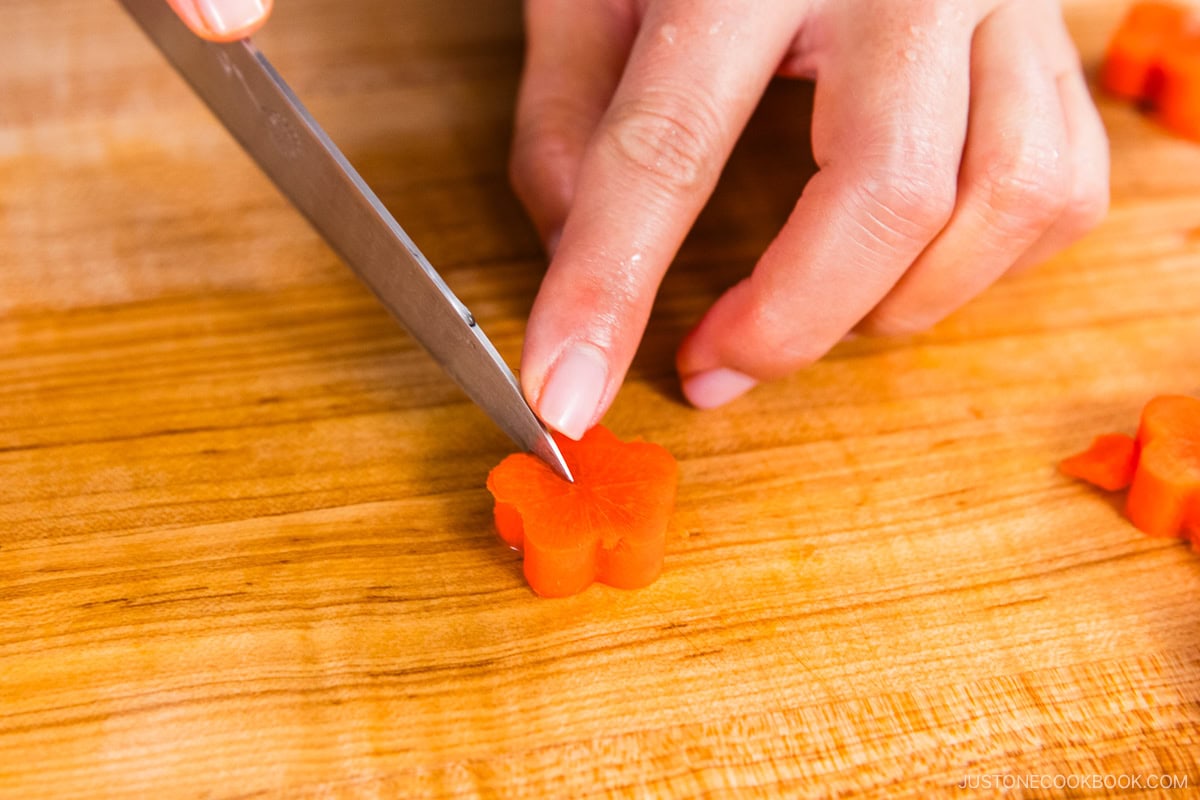
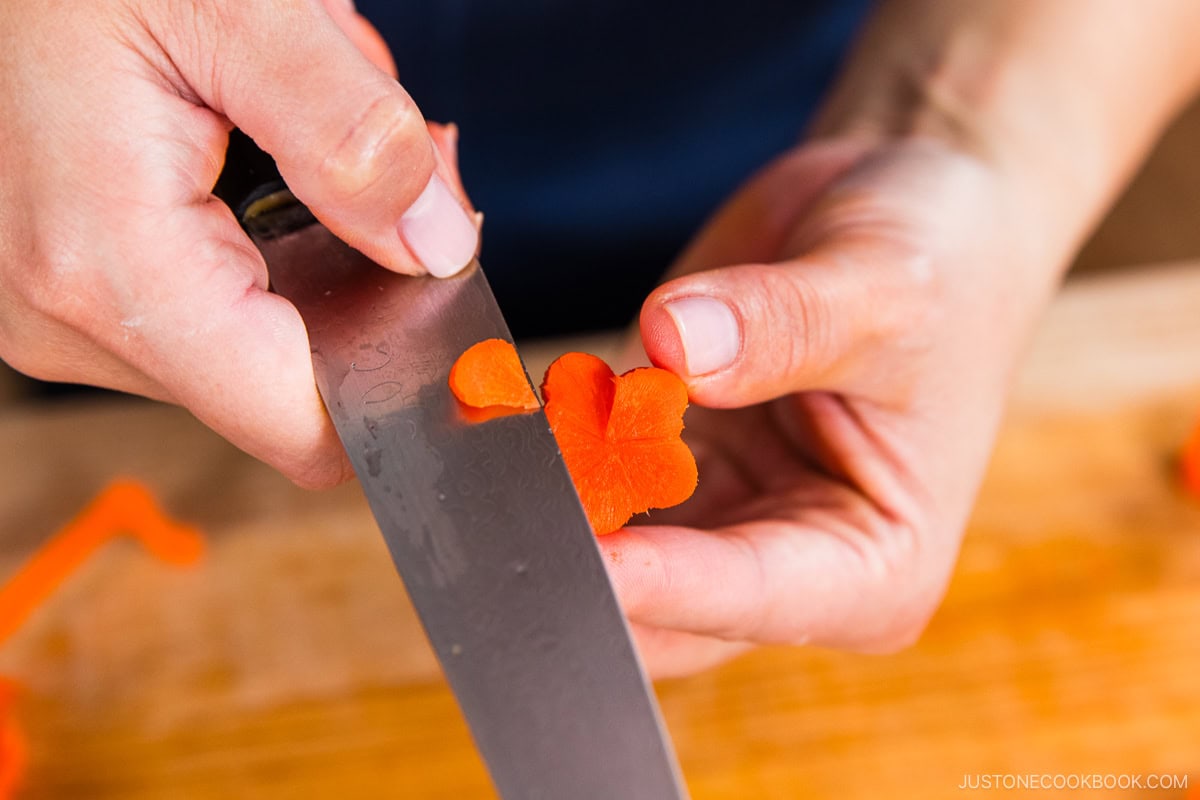
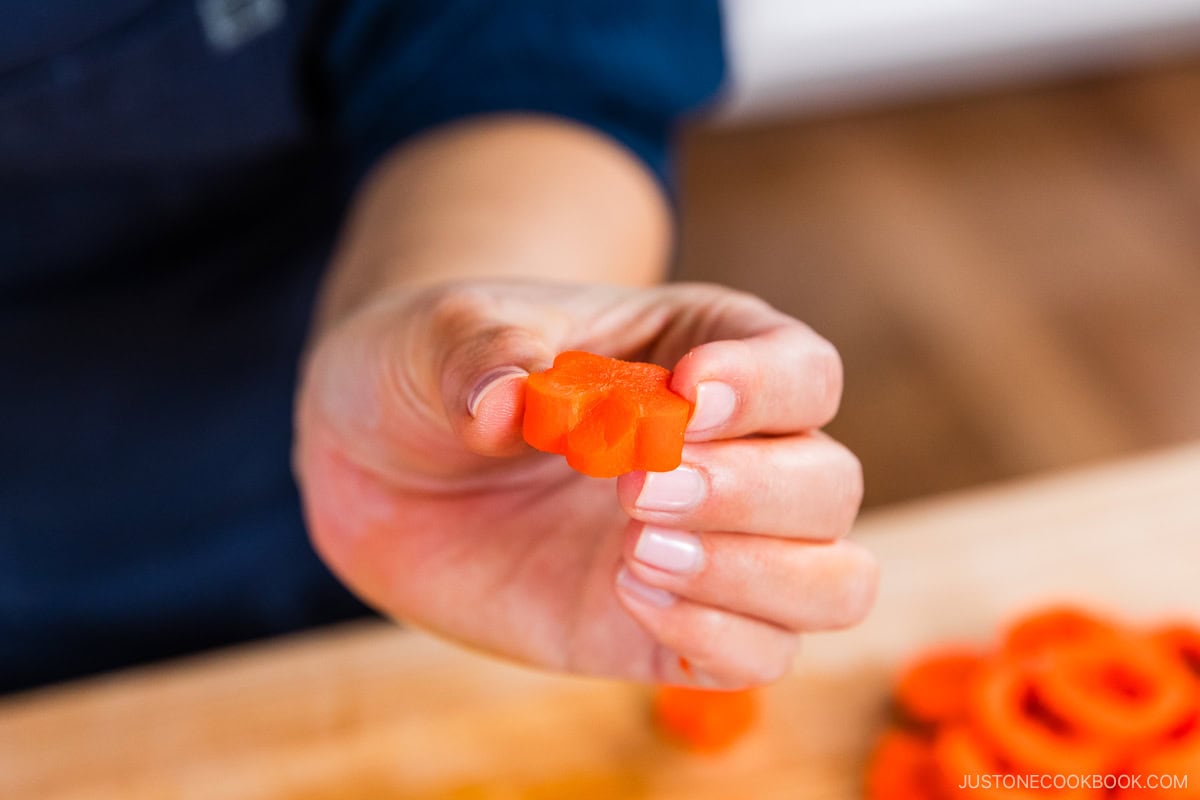


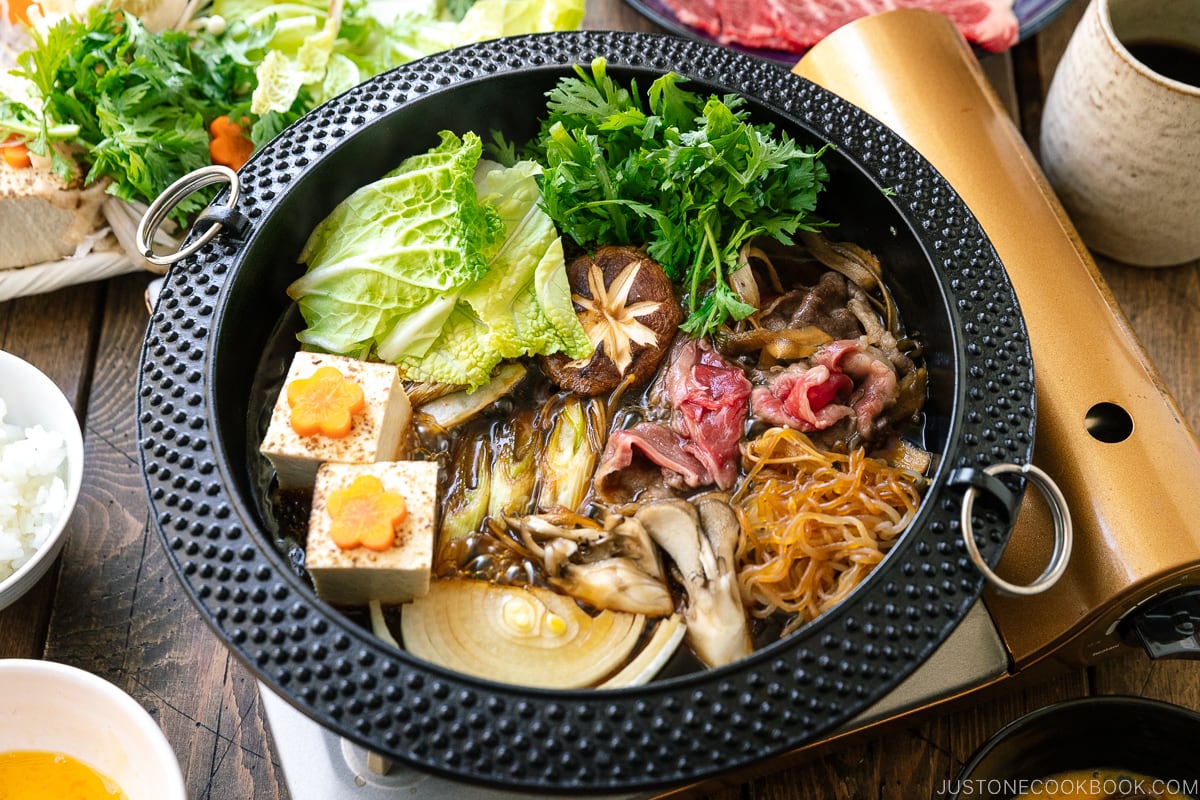
We typically make nejiri ume with carrots. You can also make daikon no nejiri ume using daikon radish.
You can cut a decorative flower pattern on shiitake mushroom caps with the unique Japanese cutting technique called Shiitake Hanagiri.

Prep Time: 15 minutes
Total Time: 15 minutes
Japanese Ingredient Substitution: If you want substitutes for Japanese condiments and ingredients, click here.
Beginner Method: Vegetable Cutter
Advanced Method: Decorative Knife Cut
This extra carving step might seem tedious, but it really brings the flower to life—perfect for festive presentations and osechi plating.

To Use the Decorative Flowers
Blanch them in boiling water until tender, about 3–5 minutes, depending on thickness.
Course: How to
Cuisine: Japanese
Keyword: cutting technique
©JustOneCookbook.com Content and photographs are copyright protected. Sharing of this recipe is both encouraged and appreciated. Copying and/or pasting full recipes to any website or social media is strictly prohibited. Please view my photo use policy here.
If you made this recipe, snap a pic and hashtag it #justonecookbook! We love to see your creations on Instagram @justonecookbook!
This post was originally published on December 24, 2012. It was republished with more helpful information on June 29, 2025.









:max_bytes(150000):strip_icc()/Parents-GuidetoEmojiSlang-bebd8a1f47c74bc99b143e4482170016.jpg)

